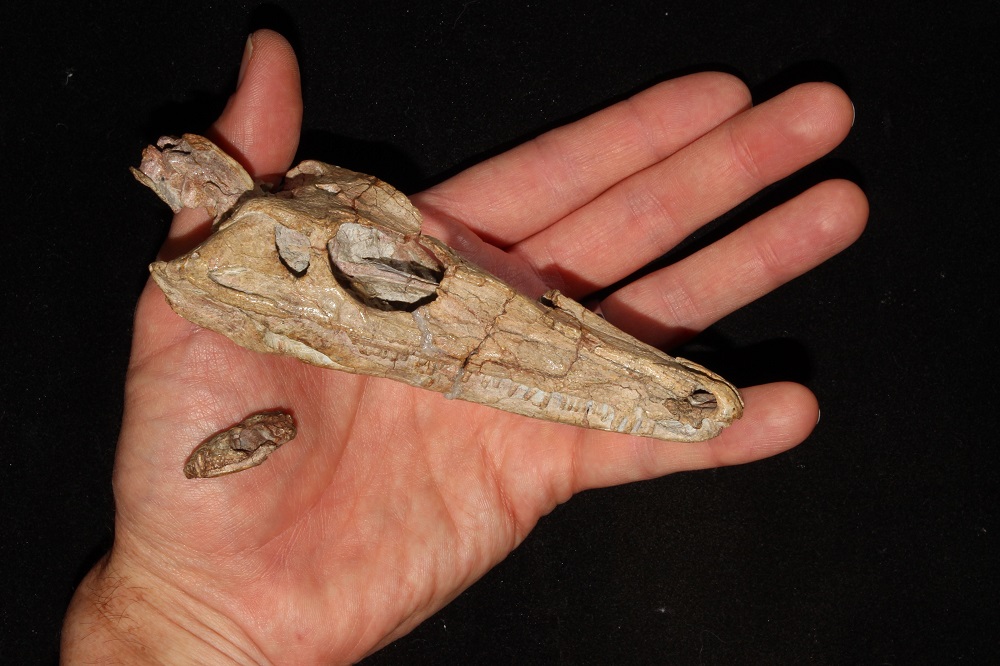Climate change tests the resilience of farmers and their crops. To better understand how plants respond to their dynamic environments, scientists magnify the complex biological conversations between genes expressed in plant cells. Mapping out gene expression is informative, but traditional approaches for spatial understanding of gene expression are limited.
Tatsuya Nobori, a plant biologist at Salk Institute, studies plant-microbe interactions.
Salk Institute
In a recent study, Tatsuya Nobori, a plant biologist at the Salk Institute for Biological Studies, developed a new technique for visualizing multiple genes in the 3D internal plant world.1 Published in Nature Plants, this targeted approach offers a promising tool for understanding the function of cell types and states and their interactions with the environment to identify beneficial traits for precision plant breeding.
Researchers commonly use single-cell transcriptomics to sequence individual cells from a tissue to understand their stress responses. Then they generate genetically-modified reporter lines to study the target genes identified in the single-cell transcriptome analysis. These reporter plants are time consuming and labor intensive to create, and they limit researchers to studying a single gene of interest. Additionally, imaging techniques require cutting the plant tissue into thin slices, which loses spatial information.
“These limitations significantly impede the progress of understanding spatial gene expression analysis,” explained Nobori, who led this work. This motivated Nobori to develop a new way to examine genes with high resolution in 3D.
The biological findings that PHYTOMap can potentially help with are the stress responses of plants as they are exposed to different environmental stresses such as warming or freezing temperatures and even pathogen attacks.
– Tatsuya Nobori, Salk Institute for Biological Studies
To save time and study dozens of genes at once, Nobori developed a method called plant hybridization-based targeted observation of gene expression map (PHYTOMap). Built upon in situ hybridization and sequencing technologies, PHYTOMap simultaneously visualized dozens of genes in a 3D space with a whole tissue sample of Arabidopsis thaliana. “I chose Arabidopsis as a proof-of-concept since it has been the model organism for many plant biologists and has helped us understand the fundamental principles in plant biology,” said Nobori.
Nobori targeted Arabidopsis’ root tip, a critical structure for investigating growth, nutrient acquisition, and interactions with soil microbes. First, he fixed whole-mount root tip tissue, which anchored all of the target RNA molecules in place. Then, Nobori hybridized the RNA molecules with artificial DNA probes containing gene-specific barcodes, which he amplified in situ and detected with sequence-by-hybridization chemistry. With this technique, he visualized specific genes and then easily stripped the tissue of probes to replace them with a new set of target gene probes.
To demonstrate PHYTOMap’s multiplexing capacity, Nobori targeted 28 genes in the root tip. The targeted genes included known cell type marker genes and other marker candidates identified in single-cell RNA-sequencing (scRNA-seq) studies.2 Additionally, PHYTOMap displayed high sensitivity for genes that showed low expression and captured major cell types and developmental stages. When Nobori compiled the images, they revealed a colorful canvas of genes within Arabidopsis’ root tip.
See Also “Essential Genes Protected from Mutations“
PHYTOMap displayed accuracy comparable to other imaging-based techniques and successfully detected green fluorescent protein (GFP) mRNA in expected cell types and regions of the root tip of an Arabidopsis model. The researchers demonstrated PHYTOMap’s prowess for investigating spatial regulation of cellular responses in plant tissue.
“The biological findings that PHYTOMap can potentially help with are the stress responses of plants as they are exposed to different environmental stresses such as warming or freezing temperatures and even pathogen attacks,” said Nobori. “Because plant responses to stress are extremely heterogeneous, it’s really important to understand these responses at a single cell resolution with spatial information.”
This work represents the first approach that is imaging-based in plants that allows us to visualize genes at a subcellular resolution, which has been missing in the field.
– Stefania Giacomello, KTH Royal Institute of Technology and Science for Life Laboratory
Scientists in the spatial transcriptomics field use two types of approaches: imaging- and sequencing-based methods. “This work represents the first approach that is imaging-based in plants that allows us to visualize genes at a subcellular resolution, which has been missing in the field,” said Stefania Giacomello, a spatial biologist at the Kungliga Tekniska högskolan (KTH) Royal Institute of Technology and Science for Life Laboratory, who was not involved in this study.
In 2017, Giacomello developed a sequencing method that complements PHYTOMap as an untargeted, exploratory study of plant transcriptomics.3 This exploratory method captured the whole transcriptome, but the resolution was not as specific as imaging-based methods. “This is when you need a targeted-based approach like PHYTOMap to zoom in on target genes,” explained Giacomello. With high resolution imaging, PHYTOMap will propel efforts to visualize and gain insight into the dynamic gene interactions of plants in changing environments.
See Also “Siobhán Brady Uses Big Data to Investigate Plant Development“
As Nobori now prepares to start his own lab at the Sainsbury Laboratory, he plans to hone the multimodal potential of PHYTOMap. “I envision balancing PHYTOMap in a way that can detect RNA, proteins, and metabolites at the same time to maximize the amount of information gained and get a better understanding of what’s happening in plant-microbe interactions.”
References
- Nobori T, et al. Multiplexed single-cell 3D spatial gene expression analysis in plant tissue using PHYTOMap. Nat Plants. 2023;9:1026–1033.
- Shahan R, et al. A single-cell Arabidopsis root atlas reveals developmental trajectories in wild-type and cell identity mutants. Dev Cell. 2022;57:543–560.
- Giacomello S, et al. Spatially resolved transcriptome profiling in model plant species. Nat Plants. 2017;3:17061.














